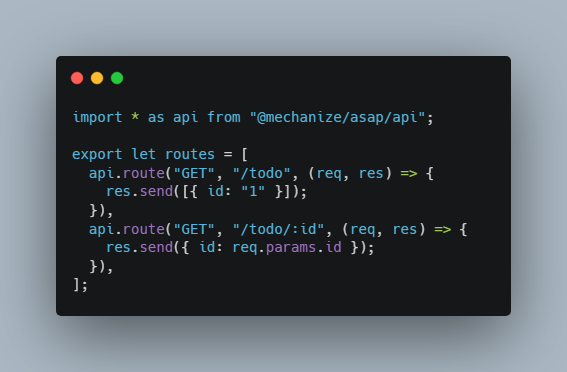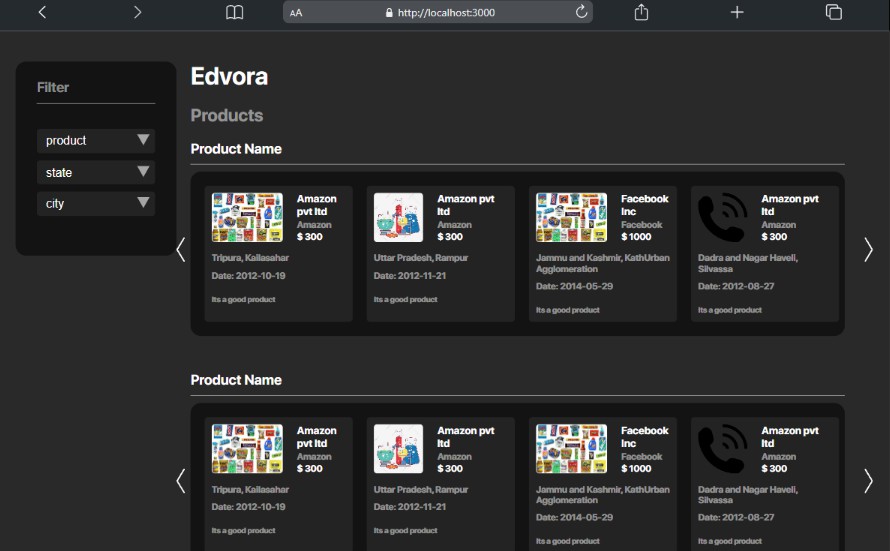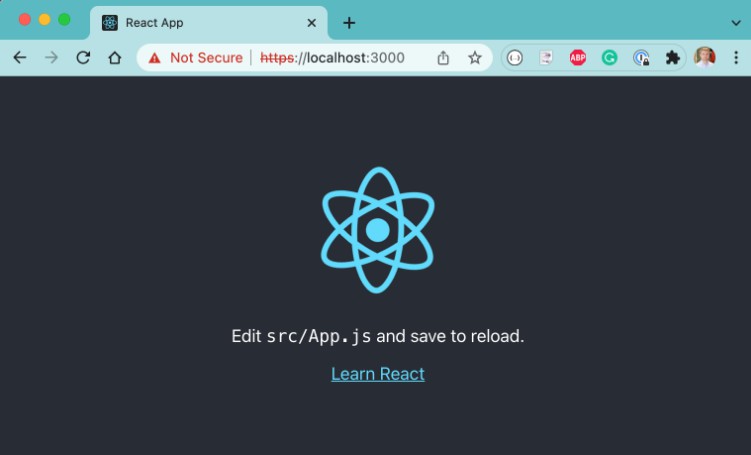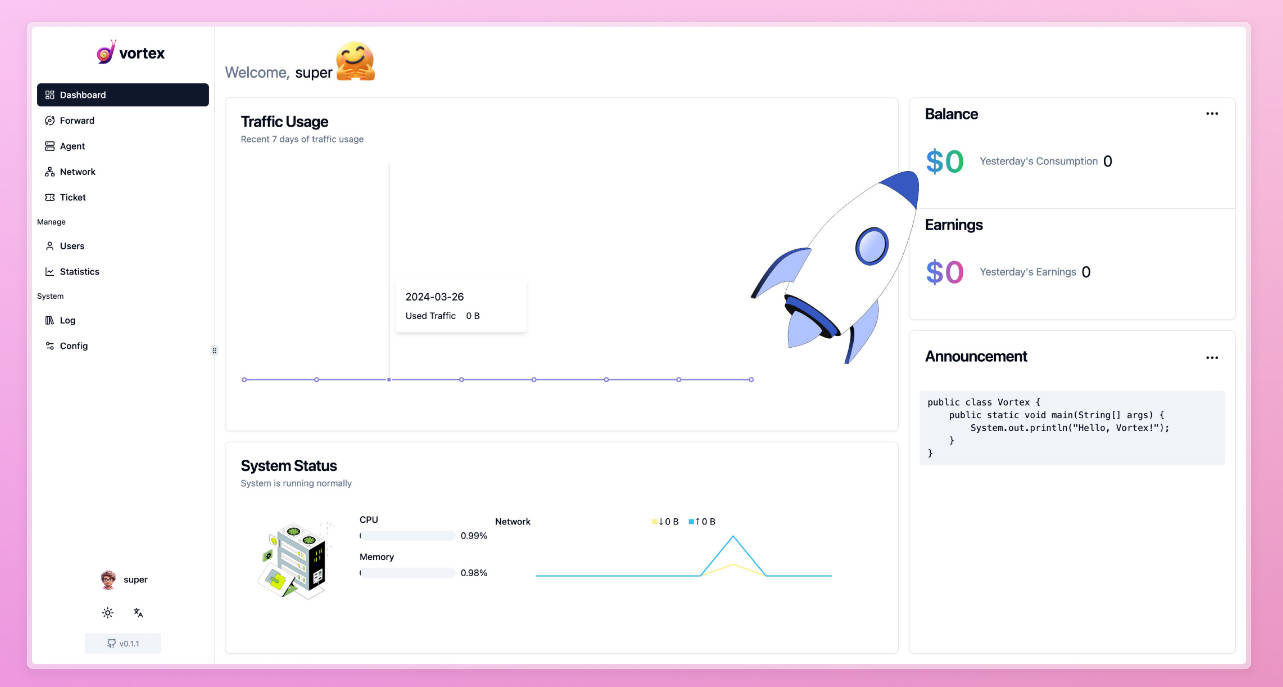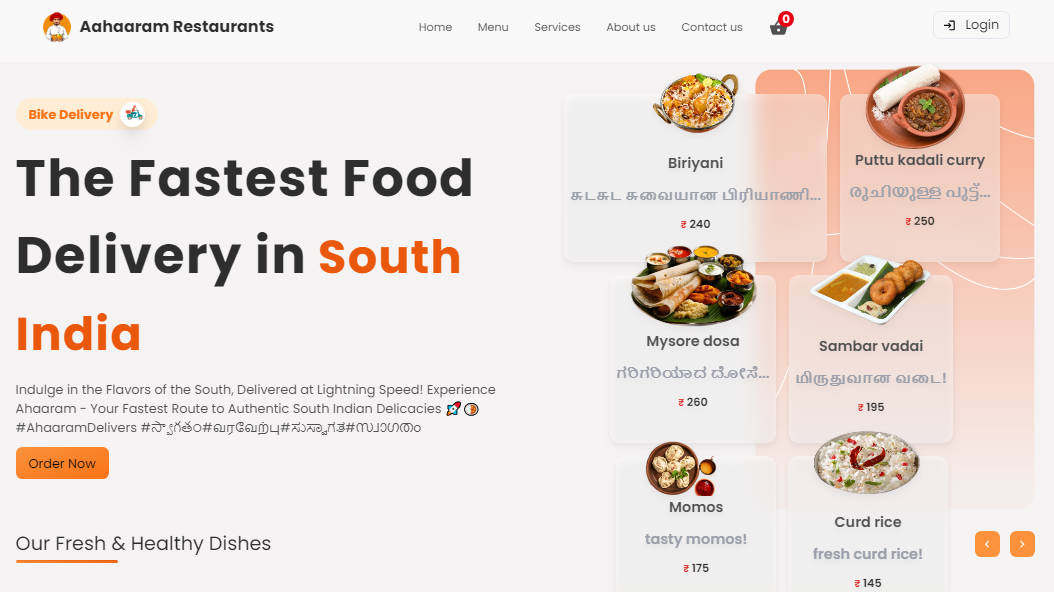ASAP
An opinionated application server for React Single Page Applications.
Motivation
Next.js and others are great but they favor use cases of landing pages and
ecommerce websites, providing them with SSR, “on the edge” deployment etc.
These are all great features but we don’t always need such complexity if all we
want to implement is a simple React app and a few API routes along.
Therefore there’s ASAP which:
- … is a simple application server built on top of tinyhttp, esbuild
and React - … strives to enable fast iterative development
- … and get out of your way in production
Features
-
ASAP is opinionated
-
ASAP builds both client and server code with esbuild, you don’t need to mess
with build configuration (also because you can’t) -
In development mode ASAP automatically reloads server code on changes, you
don’t need to restart theasap serveto iterate -
ASAP provides a very thin client side application framework on top of React
with type safe routing
Quickstart
Initialize a new project:
mkdir example && cd example && pnpm init
Add dependencies to the project:
pnpm add react react-dom @mechanize/asap
Let’s create a simple app of two pages.
First of all create app.js in the root of your repository:
import * as React from "react";
import * as ASAP from "@mechanize/asap";
export let routes = {
index: ASAP.route("/", async () => ({ default: Index })),
hello: ASAP.route("/hello/:name", async () => ({ default: Hello })),
};
function Index() {
return (
<div>
<p>Welcome!</p>
<p>
Go to{" "}
<ASAP.Link route={routes.hello} params={{ name: "World" }}>
hello page
</ASAP.Link>
</p>
</div>
);
}
function Hello({ name }) {
return <div>Hello, {name}!</div>;
}
ASAP.boot({ routes });
Let’s add a few simple API methods, create api.js file also in the root of the repo:
import * as api from "@mechanize/asap/api";
export let routes = [
api.route("GET", "/todo", (req, res) => {
res.send([{ id: "1" }]);
}),
api.route("GET", "/todo/:id", (req, res) => {
res.send({ id: req.params.id });
}),
];
Now we can serve the app:
pnpm asap serve
Now for production you’d want to the optimized bundle first:
pnpm asap build --env production
And finally serve the app in production environment:
pnpm asap serve --env production
Design Overview
- ASAP runs a tinyhttp server to serve HTML page skeletons (an empty page
with<script>tags to launch the client application) and API requests - in development ASAP compiles client code with esbuild
- in development ASAP compiles server code with esbuild, this allows to hot
reload server code (on changes the bundle will be rebuilt and the next request
will be served using newly built code) - in production esbuild is not used and built bundles are used instead
- on client there’s
@mechanize/asaplibrary which provides suspense-enabled
typesafe routing
